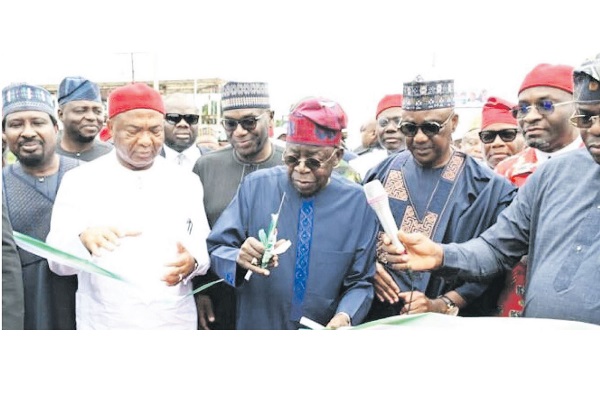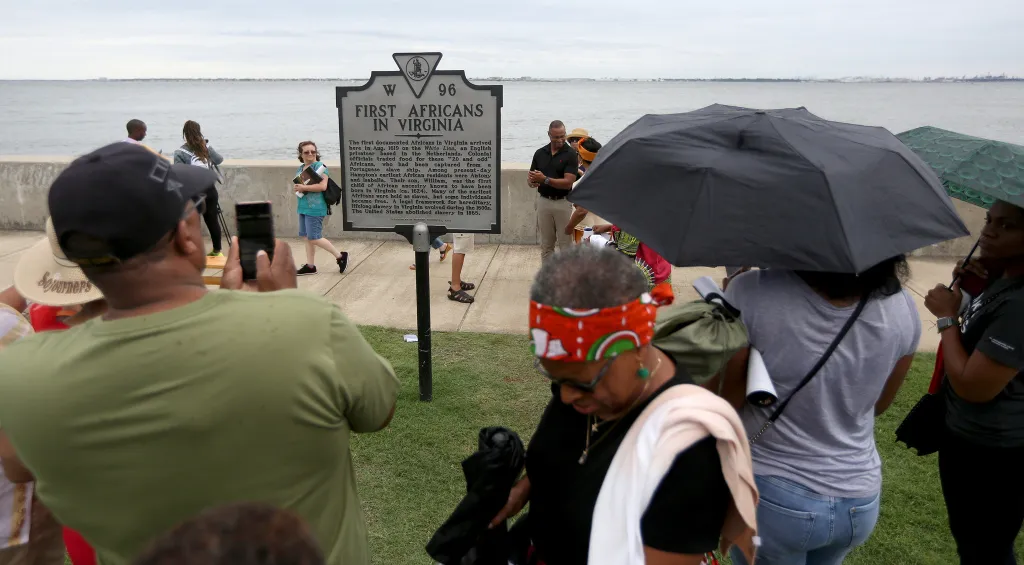By Adekunle Yusuf,The Nation
Copyright thenationonlineng

It wasn’t just a presidential visit — it was a turning point. In the early rain, Owerri, Imo State capital, stood still, expectant. Roads once seen as metaphors for neglect were now freshly paved. As President Bola Tinubu arrived, what transpired wasn’t just ceremony, but symbolism — of promises honoured and progress taking shape, reports Associate Editor ADEKUNLE YUSUF
Owerri woke before dawn. The rain came early—a gentle, almost apologetic drizzle—but it did little to quiet the city’s rising energy. As morning broke, pale ribbons of sunlight slipped through the clouds, catching the sheen of wet streets and rooftops. By 8 a.m., the city was wide awake. Schoolchildren clutched tiny flags, men pulled raincoats tight around their shoulders, and women balanced umbrellas against the lingering mist. Children perched on shoulders for a better view. Crowds gathered—beneath trees, along sidewalks, behind metal barriers. All eyes turned in the same direction, all feet planted with quiet anticipation. They had come for one purpose: to welcome President Bola Ahmed Tinubu to Imo State.
This was no ordinary visit. It was, as many would later say, a moment of pride — a public display of what many believe is change in motion, progress being commissioned into concrete and asphalt. And even though the rain attempted to borrow attention, the vibrant energy of the crowd outshone the droplets. The heart of Owerri was transformed. The major arteries — the roads leading to Assumpta Cathedral Roundabout, the highways heading toward Mbaise and Umuahia — were draped in bright banners. APC flags fluttered alongside national flags. Security vehicles, vans, motorbikes moved purposefully, some standing guard, others guiding traffic. Drums beat in distant corners; voices chanted slogans. Passengers peered out windows, marveling at the turnout.
This was no ordinary visit. It was, as many would later say, a moment of pride — a public display of what many believe is change in motion, progress being commissioned into concrete and asphalt. By the time President Tinubu’s motorcade arrived, the atmosphere was electric. He was flanked by APC governors, party leaders, and top members of the National Assembly. And even though the rain attempted to borrow attention, the vibrant energy of the crowd outshone the droplets. Major arteries of Owerri—roads stretching from the Assumpta Cathedral Roundabout to the highways leading to Mbaise and Umuahia—were draped in bright banners. APC flags fluttered beside the national colours, catching the breeze like a signal of unity. Security vehicles, vans, and motorbikes moved with intent—some forming a shield, others directing the flow. In distant corners, drums pulsed and voices rose in song. Passengers leaned out of car windows, eyes wide, swept up in the spectacle.
The newly reconstructed Owerri–Mbaise–Obowo–Umuahia Road
One of the most talked-about highlights of President Tinubu’s visit to Imo State was the commissioning of the newly reconstructed Owerri–Mbaise–Obowo–Umuahia Road — a 26-kilometre stretch of critical infrastructure that, for decades, existed more in frustration than functionality. This road is far more than just a stretch of tarmac. It’s a major economic and cultural artery, linking Owerri, the capital of Imo State, with Mbaise and Obowo — two densely populated regions with strong agricultural and commercial roots — before extending into Umuahia, the capital of neighbouring Abia State. For years, the road was infamous for its craters, flooding, and traffic bottlenecks, slowing down trade, isolating communities, and contributing to the wear and tear on transport vehicles.
According to traders, commuters, and logistics operators who frequently used the route, a journey that should have taken 30 to 40 minutes often stretched into hours during the rainy season. The road’s condition also made it a security risk, especially at night — with broken-down vehicles vulnerable to theft, and commuters stranded in poorly lit, isolated areas. What makes the Owerri–Mbaise–Obowo–Umuahia Road particularly strategic is not just its length or its improved surface — but the vital lifeline it represents between two state capitals and, by extension, two major economic zones in Nigeria’s South-East region. It connects Owerri, a bustling hub of commerce, education, and urban development, to Umuahia, a capital city known for its administrative significance and agricultural economy. But the importance of this road runs deeper than geography. It is a road that serves people, livelihoods, and entire communities whose lives are shaped by their ability to move.
The flyover at the Assumpta Cathedral Roundabout
The newly inaugurated flyover at Assumpta Cathedral Roundabout stands as both a literal and symbolic elevation of Owerri’s urban future. For decades, that junction — a key point where traffic from the Port Harcourt–Onitsha axis intersects with the city’s core — was a daily source of congestion, frustration, and delay. It’s a roundabout that once pulsed with the honks of gridlocked buses, the slow crawl of petrol tankers, and the weaving chaos of okadas and private cars. At peak hours, the entire area became a bottleneck, stretching the patience of commuters and draining productivity.
Now, with the sleek overpass in place, traffic flows with an ease many commuters had stopped believing was possible. Designed to separate the heavy through-traffic from local city movement, the flyover allows vehicles travelling between Port Harcourt and Onitsha — two of the busiest commercial cities in southern Nigeria — to bypass the gridlock entirely. Beneath the bridge, urban planners have restructured the ground-level lanes for better pedestrian access and reduced conflict zones. It is more than a concrete structure; it is a redesign of movement, an answer to a long-unresolved urban headache. For residents of Owerri, this single flyover represents something broader — a glimpse into what the city could become when infrastructure keeps pace with population growth.
The Emmanuel Iwuanyanwu International Conference Centre and other projects
Not far from the hum of moving vehicles and newly opened lanes stands another flagship project — the Emmanuel Iwuanyanwu International Conference Centre (EIICC). Towering with sleek glass and steel, and named after one of the state’s most prominent elder statesmen and business icons, the centre is a declaration of ambition. It is built not merely as a venue, but as a statement: Imo is open for business, for diplomacy, for discourse. The EIICC boasts the kind of modern facilities anyone would expect to find in Abuja or Lagos: multiple auditoriums, breakout halls, press rooms, digital presentation capabilities, and expansive exhibition spaces. It’s tailored to host everything from economic summits and medical conventions to tech expos and cultural festivals. With a growing demand for high-end event infrastructure in the Southeast, the centre is poised to become a regional hub, drawing visitors, investors, and ideas into Owerri.
But the most transformative projects are often the ones less visible to the casual observer — the quiet revolutions taking place in administrative backrooms, dusty archives, and underutilised corridors of government. That’s where the Imo State Land Information Service Centre (LIS Centre) comes in. Housed in a modern facility, the LIS Centre is part of a deliberate push to digitise land records, streamline property transactions, and eliminate the labyrinth of paper trails and corruption that has long dogged land ownership in the state. For decades, acquiring or verifying land titles in Imo was a process fraught with uncertainty and delay. Double allocations, missing files, extortion, and years-long court cases were all too common. With the launch of the LIS Centre, Governor Uzodinma’s administration is attempting to pull land governance into the 21st century. Now, prospective landowners, surveyors, and developers can access digitized maps, apply for certificates of occupancy, verify ownership, and monitor processing timelines — all online. The implications of this are enormous. Easier land transactions mean faster property development. Less fraud means more investor confidence. And more transparency means everyday citizens — not just the well-connected — can access land without fear of manipulation or exploitation.
Read Also: Tems becomes first Nigerian female artist to sell over 10 million units in U.S
Beyond roads and flyovers, some projects quietly shape the spirit of governance. The renovated Government House Chapel, though modest in scale, reflects a commitment to reflection, faith, and moral grounding in public service. It’s a space for prayer, unity, and pause amidst political noise. Nearby, the restored Concorde Hilton Hotel marks a revival of Owerri’s hospitality sector. Once faded, it now boasts modern rooms, event halls, and improved services—ready to welcome business travellers and dignitaries. Together, these projects—both symbolic and strategic—are part of a broader urban renewal vision, reshaping not just Owerri’s skyline, but its sense of purpose.
Voices from the crowd
Under umbrellas and plastic tarps, faces glowed with hope. Some had come to feel seen; others to be heard. Madam Nkechi Okoro, a small business owner in Emekuku, said she had already lost hours daily to gridlock. “Before, the journey from Owerri to Umuahia is a stress, money wasted on fuel, time gone. With this new road, we expect quicker access to markets, hospitals, schools,” she said, her voice clear over the drizzle.
A young man, Chinedu, perched on a motorbike, described this as more than infrastructure. “What is happening now,” he said, “is that government actually listens. Roads, flyovers… these are things we feel. We see. They don’t just talk.” Others were skeptical, of course. “Let them finish,” said Mrs. Ifeoma Eze from Obowo. “Many times we celebrate projects before they are done. I want to see it when I drive those roads in dry season.” But even her doubt carried curiosity — perhaps expectation.
Standing on the new flyover, Governor Uzodinma addressed the public earlier that morning, despite the rain. He spoke not just of the structures being commissioned — but of governance without shortcuts. He spoke of performance, not promises. He reminded the people that poor materials, substandard finishes, stalled construction had once been the norm — but that under his Renewed Hope Agenda, those days were being challenged. More than 120 roads, the Governor said, had been built or rehabilitated across the state. The digital land platform, he emphasized, will reduce corruption, ease land transfers, and remove the confusion that long plagued real estate and property ownership in Imo. Government House Chapel and hospitality projects aim to boost tourism and civic pride. All are pieces of a larger puzzle: transforming Imo into a state that matches its potential.
As the rain eased to a gentle drizzle, President Tinubu addressed the crowd, praising Imo’s progress but urging that the newly commissioned projects be seen not as endpoints, but as stepping stones. He stressed that lasting change depends on maintenance, transparency, and shared responsibility. Roads, flyovers, and new facilities, he said, must unlock growth, not just headlines. Yet even amid celebration, quiet questions lingered—about sustainability, traffic flow, and disruptions to local businesses. Still, beneath the banners and applause, a deeper shift was taking root. On that rainy morning in Owerri, what truly emerged was not just infrastructure — but renewed hope.



